Maximiser l’impact des programmes de reconnaissance entre pairs en milieu de travail

Mis à jour
2 juillet 2025
2
Juillet
2025
Lorsque William James, connu comme le père de la psychologie américaine, était professeur en 1896, sa classe lui a envoyé une azalée en pot pour Pâques. Dans une lettre remerciant les élèves, James a écrit l’une de ses lignes les plus célèbres :
« Le principe le plus profond de la nature humaine est l’envie d’être apprécié. »
Plus d’un siècle plus tard, la recherche lui a donné raison. Dans une étude menée auprès de plus de 200 000 personnes, « l’appréciation de son travail » s’est classée comme le principal facteur de bonheur au travail, au-dessus de la rémunération, du développement de carrière et de l’équilibre travail-vie personnelle.
La reconnaissance n’est pas seulement un geste de bien-être. C’est un besoin humain fondamental. Et lorsque les organisations répondent à ce besoin par le biais de la collaboration entre pairs reconnaissance des employés, les effets peuvent transformer votre culture de travail et vos résultats d’affaires.
Pourquoi la reconnaissance entre pairs est importante
La plupart des organisations comprennent la valeur de la reconnaissance dirigée par les gestionnaires. Mais lorsque l’appréciation n’est que descendante, sa portée et son impact sont limités. La reconnaissance entre pairs, quant à elle, débloque un puissant changement culturel. La reconnaissance circule dans toutes les directions, renforçant toutes les facettes de votre culture de travail.
Voici ce qui se passe lorsque les pairs sont habilités à se reconnaître mutuellement :
- L’engagement augmente. Les employés qui reconnaissent régulièrement sont 26% plus engagés.
- L’appartenance s’approfondit. 86% des employés affirment que la reconnaissance les aide à mieux communiquer avec leurs collègues.
- La culture se renforce. 89% sont d’accord pour dire que la reconnaissance par les pairs améliore la culture en milieu de travail.
- Le roulement diminue. 75% des employés affirment que la reconnaissance leur donne envie de rester plus longtemps.
- La performance s’améliore. Donner de la reconnaissance entraîne une augmentation de 33% de l’innovation et de 22% de meilleurs résultats au travail.
- Le bien-être augmente. 84% des employés affirment que la reconnaissance améliore leur bien-être personnel.
Selon Forbes, les employés qui reçoivent régulièrement la reconnaissance des gestionnaires et des pairs sont 56% moins susceptibles de chercher de nouvelles opportunités d’emploi et sont cinq fois plus susceptibles de se sentir connectés à leur culture d’entreprise.
Il est clair que lorsque la reconnaissance fait partie du travail quotidien, les gens et les organisations prospèrent.

L’impact culturel de la reconnaissance au travail
À la base, la reconnaissance entre pairs crée une culture d’appréciation. Et l’appréciation est contagieuse.
Il suscite des émotions positives, établit des relations solides et favorise des comportements prosociaux comme l’aide, le mentorat et la collaboration.
Voici à quoi cela ressemble en pratique :
- Des employés plus heureux et plus connectés. La gratitude a été associée à une plus grande satisfaction à l’égard de la vie et à une diminution du stress. Lorsque les employés sont encouragés à se remercier mutuellement, ils sont plus susceptibles de se sentir vus, valorisés et épanouis.
- Des équipes en meilleure santé. La reconnaissance par les pairs augmente la sécurité psychologique et favorise la coopération. Il crée des environnements où les gens partagent ouvertement, font confiance profondément et célèbrent les victoires des autres.
- Une meilleure collaboration. À mesure que la gratitude renforce les relations, les équipes fonctionnent de manière plus cohésive. Les gens sont plus disposés à aider sur des projets difficiles, à partager le crédit et à contribuer généreusement.
Le Rapport mondial sur la culture montre que la reconnaissance entre pairs augmente la probabilité d’une forte culture d’équipe de 2,5 fois.
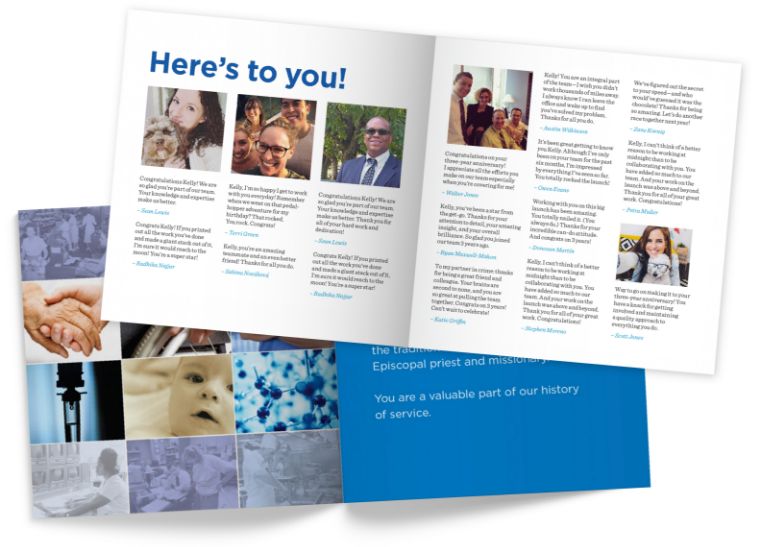
Norton Soins de santé : un lien qui coupe la crise
Lorsque Norton Healthcare a lancé son programme « N Recognition of You » avec des capacités peer-to-peer, les résultats ont été spectaculaires. La reconnaissance est devenue une bouée de sauvetage pendant la pandémie de COVID-19, renforçant la confiance des dirigeants, réduisant l’épuisement professionnel et renforçant la communauté.
Les employés ont commencé à se reconnaître activement dans tous les rôles et services, ce qui a entraîné une amélioration mesurable de la satisfaction des employés. Les scores des relations entre le dirigeant et l’employé sont passés du 86e au 99e centile en seulement un an, ce qui prouve que l’appréciation entre pairs peut renforcer la résilience, même dans les moments les plus stressants des soins de santé.
Pratiques exemplaires pour renforcer la reconnaissance entre pairs
Selon Gallup, les employés qui reçoivent une reconnaissance de haute qualité sont moins susceptibles de partir. La recherche dans le domaine de l' Rapport mondial sur la culture montre que le bon travail est multiplié par 18 lorsque les gens sont reconnus.
C’est le pouvoir de la reconnaissance entre pairs, et voici sept façons de bien le faire :
- Rendez-le stratégique et intégré. La reconnaissance par les pairs n’est pas seulement un avantage des RH, c’est une initiative de renforcement de la culture. Mettez en œuvre un programme à l’échelle de l’entreprise qui est lié aux valeurs de votre organisation et soutenu par la haute direction.
- Responsabilisez tout le monde. Chaque employé, quel que soit son titre, son service ou son emplacement, devrait pouvoir donner et recevoir une reconnaissance. Assurez-vous que l’accès est universel et inclusif.
- Restez simple et accessible. Rendez vos outils faciles à utiliser, avec des capacités mobiles et hors ligne pour les travailleurs sans bureau et à distance.
- Mettez en lumière l’excellent travail. La reconnaissance publique multiplie l’impact. Utilisez des murs de célébrité numériques, des réunions et des espaces de célébration partagés pour mettre en valeur vos réalisations et inspirer les autres.
- Célébrez ensemble. Invitez vos pairs à participer à des moments de reconnaissance, qu’il s’agisse de remporter des projets ou d’étapes de service. Plus il y a de gens qui participent, plus l’expérience devient significative et mémorable.
- Donnez l’exemple. Les dirigeants doivent donner l’exemple du comportement qu’ils veulent voir. Lorsque les dirigeants reconnaissent les autres et parlent du pouvoir de l’appréciation, les employés emboîtent le pas.
- Gardez-le à l’esprit. La reconnaissance ne devrait jamais être « fixez-la et oubliez-la ». Des communications régulières, des rappels et des indices culturels aident à maintenir la reconnaissance et à garantir que votre programme reste dynamique et efficace.
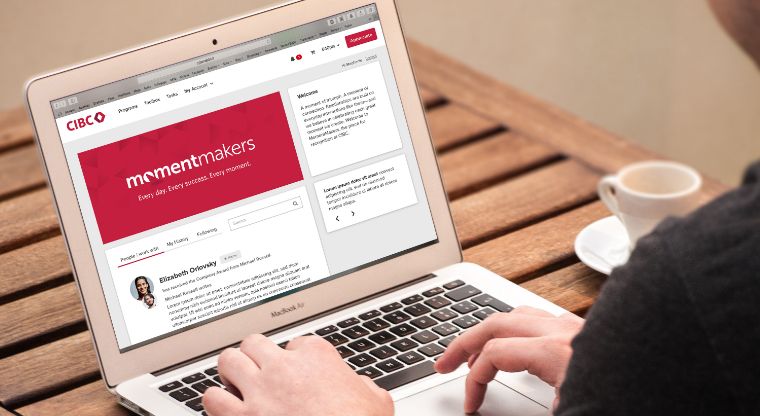
CIBC : Des moments qui connectent
La Banque CIBC a rehaussé sa culture grâce à son programme « MomentMakers », un programme à l’échelle de l’entreprise.plateforme qui rend l’appréciation visible, sociale et inclusive. Les employés peuvent se reconnaître en temps réel grâce à un mur social numérique, ce qui suscite une positivité qui se propage à travers les équipes et les sites.
En encourageant la reconnaissance par les pairs et en la liant aux valeurs fondamentales, la Banque CIBC a créé une culture plus connectée où tout le monde se sent vu et célébré.
Qu’est-ce qui fait que la reconnaissance tient
Il ne suffit pas de dire simplement « bon travail ». Pour être efficace, la reconnaissance par les pairs doit être :
- Opportun...La reconnaissance dans le moment présent montre de l’attention et de l’attention.
- Authentique...Cela ne devrait jamais sembler transactionnel. La gratitude authentique est personnelle et sincère.
- Spécifique...Allez au-delà des remerciements pour expliquer ce que la personne a fait et pourquoi c’était important.
- Partagé—La reconnaissance sociale encourage une culture d’appréciation et amplifie son impact.
Envisagez d’affecter des champions de la reconnaissance pour modéliser ces comportements et aider à développer des habitudes de reconnaissance dans votre organisation.
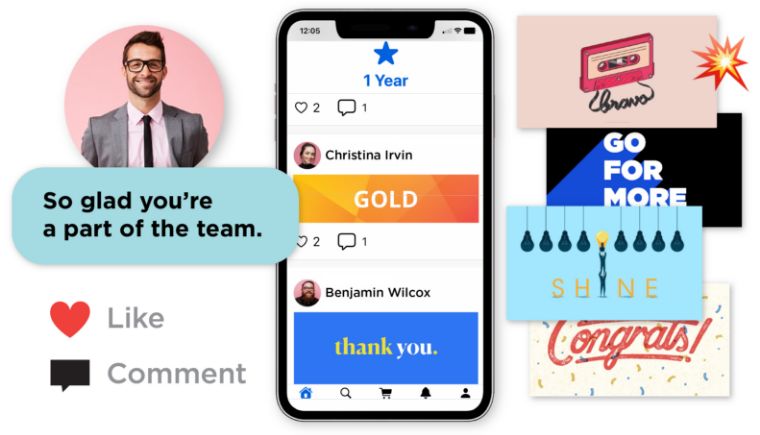
Des outils qui favorisent la reconnaissance entre pairs
Culture Cloud® par O.C. Tanner
Culture Cloud a tout ce dont vous avez besoin pour intégrer l’appréciation à votre culture quotidienne.
- Permettre la reconnaissance entre pairs dans toutes les équipes
- Créez un fil social pour présenter un excellent travail
- Intégrez les outils que vos employés utilisent déjà (Slack, Teams, Outlook)
- Alignez la reconnaissance sur les valeurs de votre entreprise
- Mise à l’échelle locale et mondiale et partout entre les deux
Avec le Culture Cloud plateforme, la reconnaissance devient visible, accessible et inclusive, connectant les gens, peu importe où ils travaillent.

Application mobile
Reconnaissance en déplacement, partout où le travail se déroule.
- Interface facile à utiliser pour une reconnaissance rapide
- Conception mobile pour les équipes hors ligne et à distance
- Notifications poussées pour garder la reconnaissance à l’esprit
- Commenter et réagir aux moments de reconnaissance
Lorsque la reconnaissance est facile à donner et impossible à manquer, tout le monde se sent apprécié.
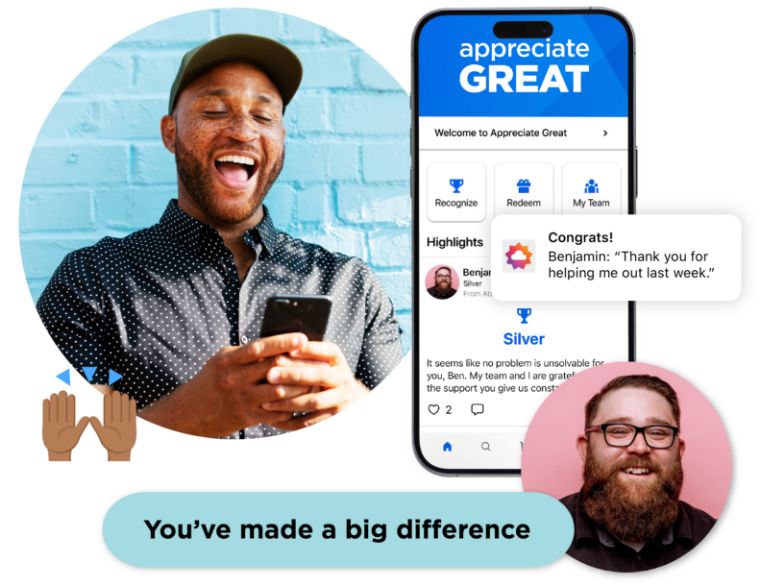
Jalons et anniversaires
Faites en sorte que les jalons de carrière aient plus d’impact. Et laissez les pairs faire partie des grands moments aussi.
- Invitez vos coéquipiers à contribuer au service anniversaires
- Créer des pages de célébration collaboratives
- Ajoutez des messages et des photos de pairs
- Aidez les employés à se sentir valorisés grâce à un livre personnalisé
Gardez vos employés connectés les uns aux autres et à leurs vision.
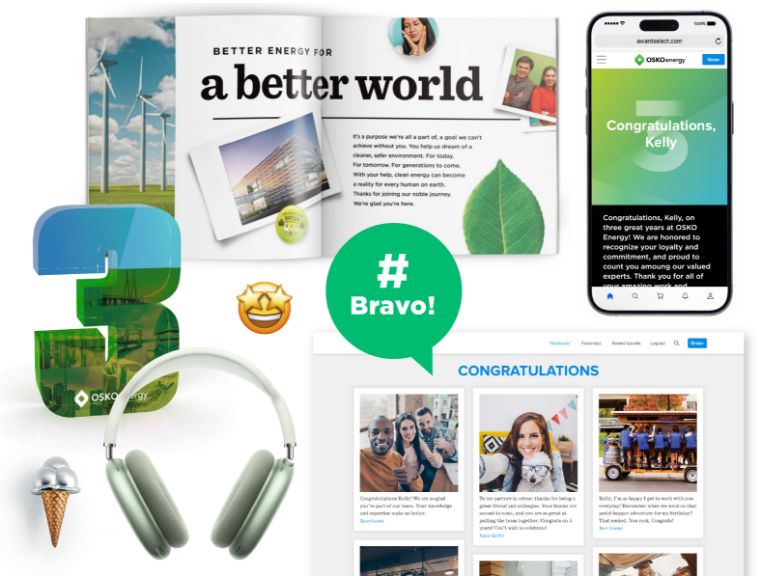
Bâtir une culture où la reconnaissance grandit
Lorsque la reconnaissance entre pairs est intégrée à votre culture, quelque chose de puissant se produit : l’appréciation devient une expérience quotidienne. Les employés n’attendent pas que leur gestionnaire remarque leurs cotisations. Ils se sentent vus, valorisés et célébrés par les personnes avec lesquelles ils travaillent tous les jours.
Le résultat? Un milieu de travail prospère où le bonheur, l’empathie, la connexion et la performance sont la norme. Un endroit où les gens veulent faire du bon travail et rester plus longtemps.
Pour en savoir plus analyses Pour savoir comment la reconnaissance influe sur la culture en milieu de travail, consultez notre 2025 Rapport mondial sur la culture.

Comment activer la reconnaissance dans toute votre organisation au début de la nouvelle année
Découvrez des outils pour tirer le meilleur parti de votre stratégie de reconnaissance, afin qu’elle atteigne tous les membres de vos équipes et dynamise votre culture pour l’année à venir.
Webinaire
Reconnaissance des employés


